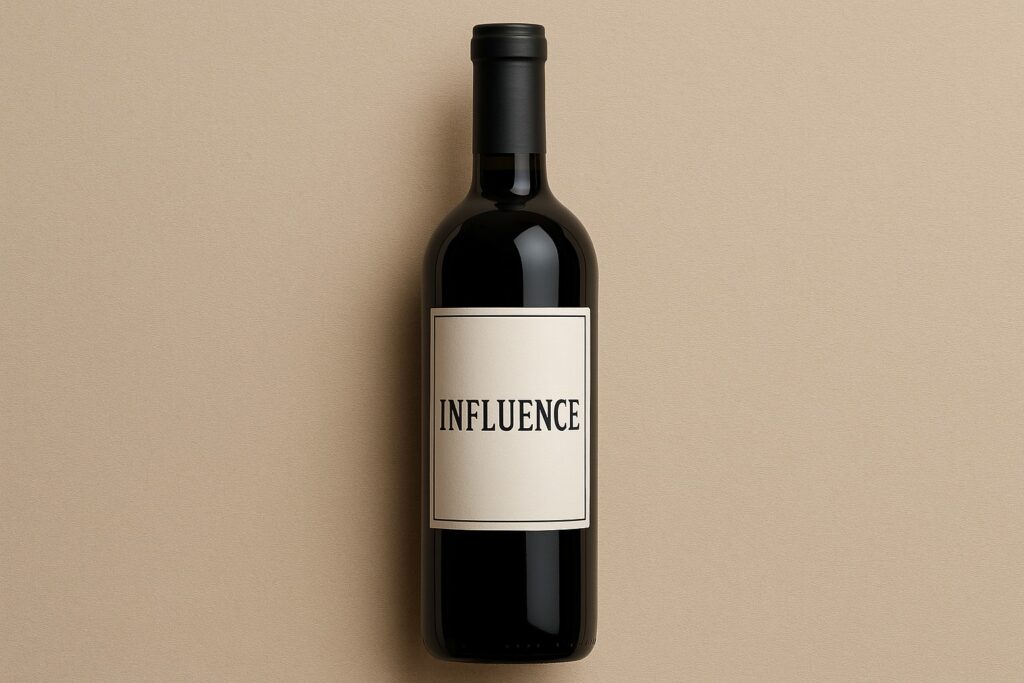
The wine trade has long held public relations in high regard. With its roots in traditional media and its polished professionalism, PR has been a staple in shaping the industry’s image, securing column inches and spreading the gospel of good taste. Yet in recent years, a new force has emerged, reshaping how influence is both distributed and perceived: the influencer, or is it vinfluencer?
Jason Millar’s article, In Defence of Influencers, raises a timely point about how language colours perception. “Influential” is a compliment, yet “influencer” is often said with an eye-roll. This semantic sleight-of-hand reveals deeper discomforts within the industry, not just with who holds influence, but how they wield it. PR, with its carefully managed relationships and longstanding channels, has long been the gold standard for shaping opinion. But influencers, those agile, sometimes unpolished, digital communicators, have entered the scene with a speed, clarity and reach that traditional PR sometimes struggles to match.
The unease surrounding influencers is rooted not in their effectiveness, but in their unfamiliarity. A PR professional who crafts a press release or sets up a tasting might be respected, even celebrated. Yet an influencer who creates a viral TikTok or pens a witty Instagram caption that prompts sales is often treated with suspicion. This can, as Jason notes, be a form of gatekeeping, a discomfort with new forms of communication that challenge old hierarchies and expectations.
What makes this debate particularly pertinent in wine is the nature of the product itself. Wine is laden with cultural weight, connoisseurship, heritage and so called terroir. Its communication has often been couched in expertise and a sense of the elite. Yet the influencer era brings with it a welcome dose of accessibility. A 90-second reel explaining the difference between Burgundy and Beaujolais can reach hundreds of thousands of viewers, many of whom would never read a wine magazine or attend a sommelier-led tasting. That’s influence, even if it doesn’t wear a blazer.
This isn’t to say influencers are flawless. As Jason rightly points out, social platforms reward attention over depth and the algorithmic churn can favour flash over substance. There are legitimate concerns over transparency, accuracy and the sometimes performative nature of digital endorsement. But these are not problems exclusive to influencers. Traditional media and PR campaigns are not immune to spin, bias or superficiality.
Rather than framing the conversation as PR versus influencers, it might be more fruitful to see them as complementary forces. A well-rounded wine communication strategy today might include both, the depth and credibility of traditional PR alongside the reach and relatability of influencers. It’s no longer enough to speak to a single audience through a single medium. As Jason notes, potential wine drinkers are as likely to be scrolling Reddit as they are reading Decanter.
The real measure of success in wine communication is whether people are buying, drinking and enjoying the wine as a result. Whether that’s prompted by a long-form profile in a glossy magazine or a clever TikTok is less relevant than the fact that the message resonated. Influence is influence and it’s time the industry recognised it, regardless of the channel it comes from.
As an aside, some of my friends have asked me whether I’m an influencer. I’m not entirely sure how to answer. What I write clearly has an impact on what people choose to buy, so in that sense, there is influence at play. But I don’t get paid for what I do and I never try to persuade someone to buy something I don’t personally believe in. I don’t mention anything that I don’t think genuinely deserves attention. It depends on your definition of influencer. So, I’ll let you be the judge.
In the end, perhaps the most useful thing we can do is drop the sneer and embrace the nuance of influence. The wine world is rich, varied and evolving. So too should be the ways we talk about it.













